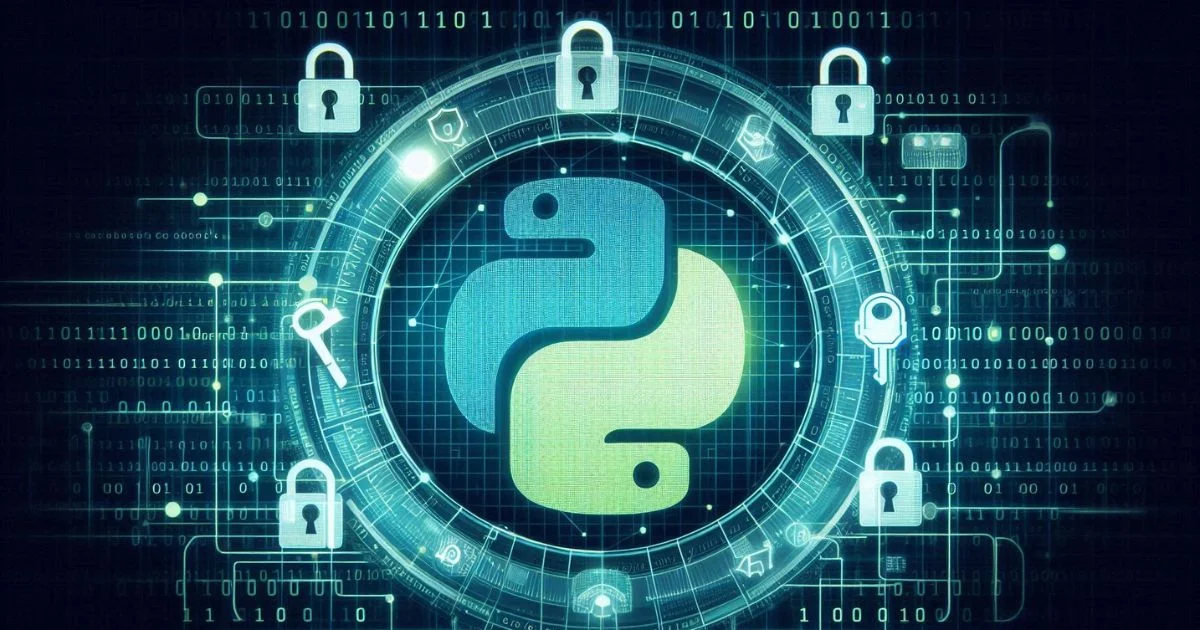In an era where digital information is a pivotal asset, ensuring its security is paramount. Cryptography, the practice of secure communication in the presence of third parties, plays a critical role in safeguarding data. As one of the most popular programming languages, Python offers a plethora of libraries and tools to implement cryptographic techniques. This blog explores Python's role in cryptography and encryption, detailing its capabilities, libraries, and practical applications.
Introduction to Cryptography
Cryptography involves converting information into a format that is unreadable to unauthorized individuals. This process, known as encryption, ensures that only those with the correct decryption key can access the original data. Cryptography serves several functions including:
- Confidentiality: Ensuring that information is accessible only to those authorized to view it.
- Integrity: Maintaining the accuracy and completeness of data.
- Authentication: Verifying the identity of the individuals involved in communication.
- Non-repudiation: Ensuring that a party cannot deny the authenticity of their signature on a document or the sending of a message.
Why Python for Cryptography?
Python's simplicity and readability make it an excellent choice for implementing cryptographic techniques. Here are some reasons why Python is favored in the field of cryptography:
- Extensive Libraries: Python boasts a wide range of libraries specifically designed for cryptographic tasks.
- Cross-Platform Support: Python is compatible with multiple operating systems, ensuring versatility in development and deployment.
- Strong Community: A robust and active community contributes to continuous improvements and updates in Python’s cryptographic libraries.
- Educational Value: Python's clear syntax is ideal for teaching and understanding cryptographic concepts.
Key Python Libraries for Cryptography
Several Python libraries facilitate the implementation of cryptographic techniques. The following are some of the most widely used:
1. PyCryptodome
PyCryptodome is a self-contained Python package of low-level cryptographic primitives. It can be used to perform various cryptographic operations such as encryption and decryption, signing messages, and verifying signatures. Below is an example of using PyCryptodome to encrypt and decrypt data:
from Crypto.Cipher import AES
from Crypto.Random import get_random_bytes
# Generate a random key
key = get_random_bytes(16)
# Encrypt
cipher = AES.new(key, AES.MODE_EAX)
data = b'Secret Message'
nonce = cipher.nonce
ciphertext, tag = cipher.encrypt_and_digest(data)
# Decrypt
cipher = AES.new(key, AES.MODE_EAX, nonce=nonce)
plaintext = cipher.decrypt(ciphertext)
print(f'Original Data: {data}')
print(f'Encrypted Data: {ciphertext}')
print(f'Decrypted Data: {plaintext}')2. Cryptography
The Cryptography library is another powerful tool for implementing cryptographic techniques. It provides high-level recipes and primitives to crypt developers. Below is an example of how to use the Cryptography library to perform symmetric encryption:
from cryptography.hazmat.primitives.ciphers import Cipher, algorithms, modes
from cryptography.hazmat.primitives import padding
from cryptography.hazmat.backends import default_backend
import os
# Generate key and IV
key = os.urandom(32)
iv = os.urandom(16)
# Create a cipher object
cipher = Cipher(algorithms.AES(key), modes.CBC(iv), backend=default_backend())
# Encrypt
encryptor = cipher.encryptor()
padder = padding.PKCS7(128).padder()
padded_data = padder.update(b"Secret Message") + padder.finalize()
ciphertext = encryptor.update(padded_data) + encryptor.finalize()
# Decrypt
decryptor = cipher.decryptor()
unpadder = padding.PKCS7(128).unpadder()
padded_plaintext = decryptor.update(ciphertext) + decryptor.finalize()
plaintext = unpadder.update(padded_plaintext) + unpadder.finalize()
print(f'Original Data: {b"Secret Message"}')
print(f'Encrypted Data: {ciphertext}')
print(f'Decrypted Data: {plaintext}')3. Hashlib
Hashlib is a built-in Python library used for hashing messages. Hashing is crucial in cryptography for verifying the integrity of data. Here’s an example of using Hashlib to hash a message:
import hashlib
# Message to be hashed
message = b'Hello, World!'
# Create a hash object
hash_object = hashlib.sha256()
# Update the hash object with the message
hash_object.update(message)
# Get the hexadecimal representation of the digest
hex_dig = hash_object.hexdigest()
print(f'Message: {message}')
print(f'Hashed: {hex_dig}')4. Fernet (Symmetric Encryption)
Fernet is a part of the Cryptography library that provides a simple API for symmetric encryption. It guarantees that a message encrypted using it cannot be manipulated or read without the key. Here is an example of how to use Fernet:
from cryptography.fernet import Fernet
# Generate a key
key = Fernet.generate_key()
cipher_suite = Fernet(key)
# Encrypt
cipher_text = cipher_suite.encrypt(b"A really secret message")
# Decrypt
plain_text = cipher_suite.decrypt(cipher_text)
print(f'Original Data: {b"A really secret message"}')
print(f'Encrypted Data: {cipher_text}')
print(f'Decrypted Data: {plain_text}')Applications of Cryptography in Python
Python’s capabilities in cryptography extend to various real-world applications. Here are some common use cases:
1. Secure Communications
Ensuring secure communication over networks is a fundamental application of cryptography. Python can be used to implement SSL/TLS protocols, which are critical for securing communications over the internet.
2. Digital Signatures
Digital signatures provide a way to verify the authenticity and integrity of a message, software, or digital document. Python libraries can be used to create and verify digital signatures, ensuring that the data has not been altered and is from a verified source.
3. Data Encryption
Encrypting sensitive data is crucial for protecting it from unauthorized access. Python's cryptographic libraries make it straightforward to encrypt and decrypt data, ensuring its security during storage and transmission.
4. Password Hashing
Storing passwords securely is a critical aspect of user authentication systems. Python libraries like bcrypt and hashlib provide robust methods for hashing and verifying passwords, enhancing the security of user credentials.
5. Blockchain and Cryptocurrency
Python plays a significant role in the development of blockchain technology and cryptocurrencies. Cryptographic techniques are fundamental to these technologies, ensuring the security and integrity of transactions.
Challenges and Considerations
While Python offers extensive support for cryptographic operations, there are challenges and considerations to be aware of:
- Performance: Python may not be as fast as lower-level languages like C or C++ for cryptographic operations. However, it strikes a balance between performance and ease of use.
- Security: Implementing cryptography incorrectly can lead to vulnerabilities. It’s crucial to follow best practices and use well-maintained libraries.
- Regulatory Compliance: Depending on the application, there may be legal and regulatory requirements to consider when implementing cryptographic solutions.
Conclusion
Python’s versatility, coupled with its robust cryptographic libraries, makes it an invaluable tool in the field of cryptography and encryption. From securing communications to protecting sensitive data, Python plays a crucial role in ensuring digital security. By leveraging Python’s capabilities, developers can implement effective cryptographic solutions, contributing to the broader effort of safeguarding information in the digital age.
As the landscape of cybersecurity continues to evolve, so too will the tools and techniques used to protect data. Python’s active community and continuous development ensure that it will remain a pivotal language in the realm of cryptography, adapting to new challenges and advancements. Whether you are a seasoned developer or a newcomer to the field, Python offers the resources and simplicity needed to effectively engage with and implement cryptographic practices.



0 Comments